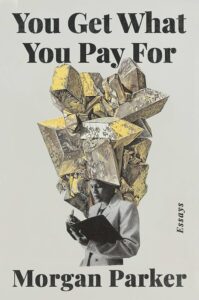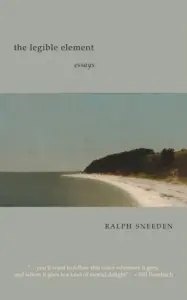All posts tagged: Ralph Sneeden
Through the Lens of the Littoral: A Review of Ralph Sneeden’s The Legible Element
By RALPH SNEEDEN
Reviewed By MATT W. MILLER
Narratively driven and lyrically evocative, The Legible Element by Ralph Sneeden is a collection of personal essays that threads stories of surfing, sailing, teaching, fishing, and even pond hockey through deep meditations about adolescence, fatherhood, marriage, family, aging, and the natural world. A kind of memoir-in-essays, the book uses these experiences and the vehicle of the “I” as a way to explore a life lived by and for water.
Fugues, Evidence, and Arguments: A Poet Finds His Way
PAUL YOON interviews RALPH SNEEDEN

In this interview, Ralph Sneeden traces his journey as a poet and essayist, avoiding the destructiveness of being pigeonholed, the inherent politicality of landscapes, and drawing from a pool of resources and poetic techniques to achieve a voice that is at once reflective, visceral, meditative, exploratory, and willing to uncover the veil of comfort and human complexity in an attempt to “testify, to lay bare the quirks, ironies and nuances of history in a way that suggests something new or different about them.”
Blaenavon

We thought it was just going to be a tour of the defunct coal mine’s aboveground facility, which was already troubling enough. The winding wheels and framework for the conveyor system at the “pit head” were like the superstructure of an abandoned carnival, like the one I’d read about near Chernobyl.
Contributors in Conversation: Terese Svoboda and Ralph Sneeden

In this episode of The Common’s Contributors in Conversation podcast, Issue 08 contributors Terese Svoboda and Ralph Sneeden read and discuss their pieces “Dutch Joe” and “Stepping Off.”
Looking for Ice
I.
At the boarding school where I teach, my campus residence bears a plaque with the name of an English teacher who drowned after falling through ice. He had been skating on the river after the year’s first deep freeze, which had been followed by a snowstorm. I was told that once his pickup hockey game had ended and the players dispersed, he made the choice to remain behind, to skate upriver, enticed, perhaps, by the beauty of new snow, to explore the transformed hemlock-banked waterway alone. This happened the winter I was hired, before I started teaching the following fall. Our paths had crossed briefly during a fellowship in New York City and at a cookout in New Hampshire with friends we had in common. I didn’t know him well, but liked him immediately, and afterward I felt as if I’d lost a friend, a kindred spirit. I appreciate what he might have felt. The power that could have drawn him onward along that white, unblemished path until it betrayed him.
Friday Reads: May 2015
Stepping Off
“And we went on living it, like a wave, that doesn’t know
it is at every moment different water.”
—Alan Williamson, from “A Childhood Around 1950”
In 1967 I almost drowned when I wandered from a sandbar and dropped into a deep cleft. That particular summer on the Jersey Shore, my older sisters had taken to riding what seemed to be kind, propellant waves with the rafts our mother had rented near the boardwalk, the industrial canvas sort you couldn’t buy in a store. I wasn’t a confident swimmer yet, so my mother wouldn’t even let me near one, which made no sense; the rafts were oversized life preservers, after all.
Django: Elegies and Improvisations with Small Boats

When a boat dies, you usually have two choices: pay hundreds of dollars to have it hauled away, or let it molder and sink into some secluded corner of the yard. A quick tour of my wife’s parents’ town on the South Shore of Massachusetts, where I moored my boat, would suggest that the latter is the norm: those husks and dark prows entombed in plain sight beside rotting cordwood, abandoned swing-sets. Last year, when I discovered that the oaken keel of my sailboat had rotted irreparably, I embarked on my first experiment with time-lapse photography. I rented for twenty dollars a “reciprocating saw”—the contractor’s principal instrument of demolition—known as a Sawzall. After positioning my iPad on a kitchen chair in the driveway of my in-laws’ home, then unraveling forty yards of extension cord from the garage, I plugged in the nasty tool—part torpedo, part robotic swordfish—and grimly laid into the carapace of the little boat over which I had worried and fussed for almost ten years.










